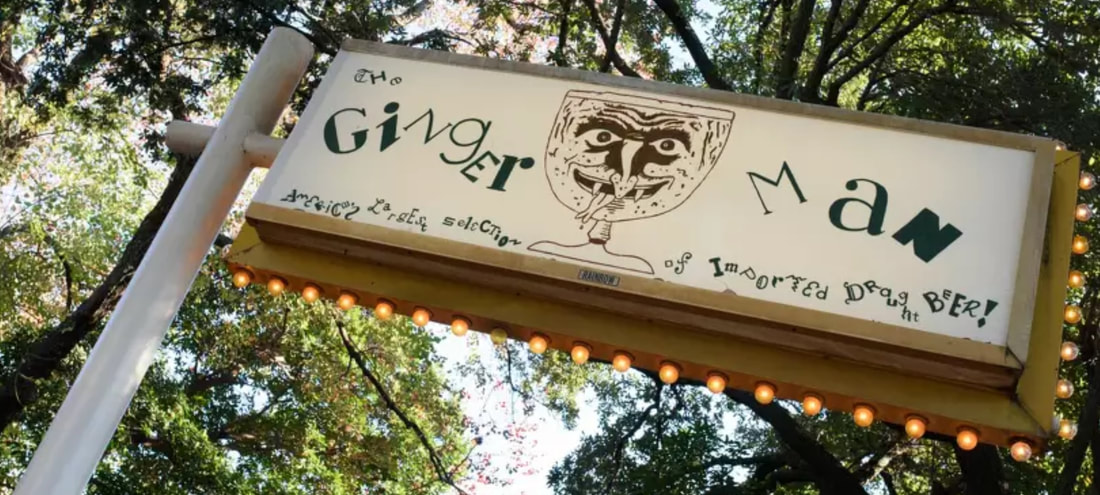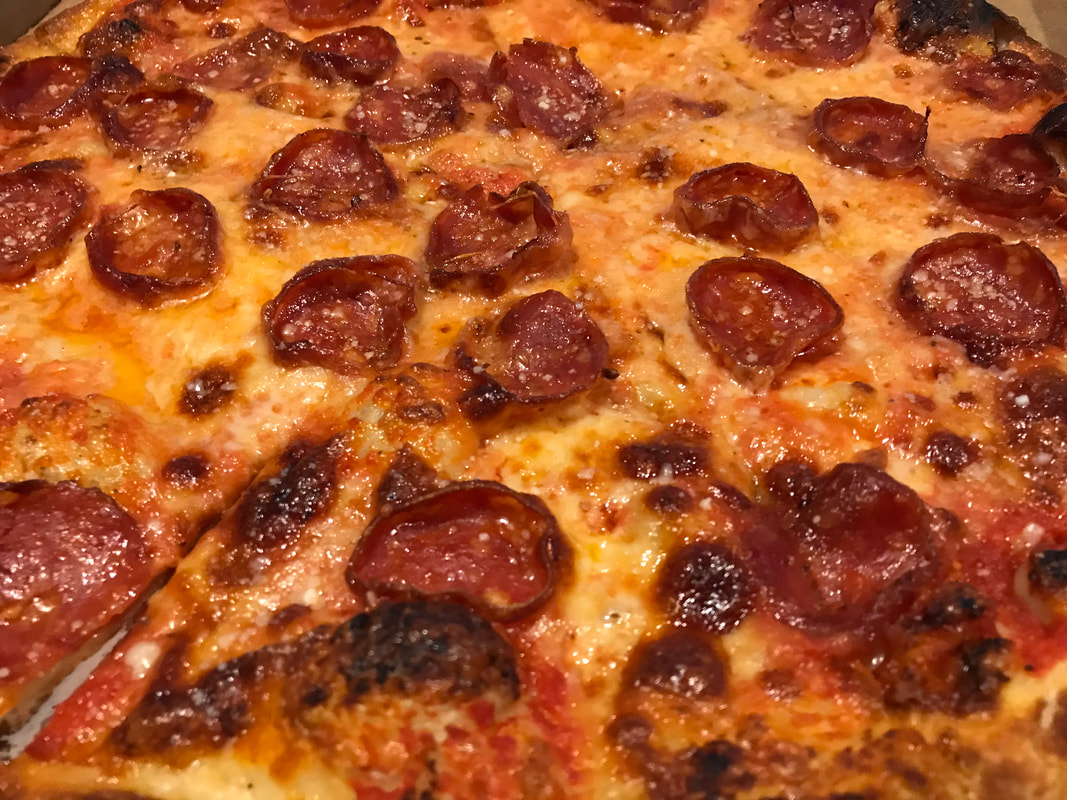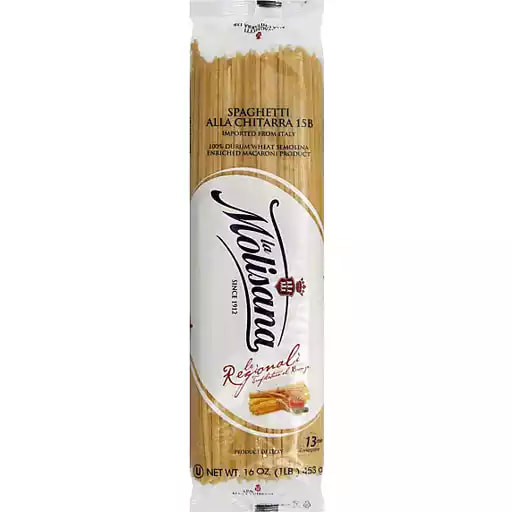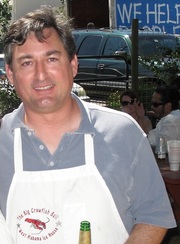Below is what I penned some years ago for a gastronomic journal about it.
The Ginger Man in Houston
The nicely appointed watering hole at 11 E. 36th Street in Manhattan, not too far north of the Empire State Building, is smartly decorated and appropriately polished. It sports an intelligent selection of beers that is resplendent with and oft-quirky Belgian labels, well-made regional and European lagers, and numerous aggressively-hopped and alcoholic domestic ales that recently styled beer aficionados are quick to champion. It is the fitting setting for one of the nation’s best beer bars.
Though it certainly seems that it could be, this location of The Ginger Man is not the one that introduced the concept of the “beer bar.” These bars, in turn, helped to raise the interest in quality beers and abetted the growth of what were called microbreweries in the 1980s and 1990s. That first beer bar is nearly 1,500 miles away in Houston, the very first Ginger Man (or Gingerman in deference to the great late Mr. Jackson). In a city that is always looking forward and almost never backwards, this fact is largely unknown by most locals, even those who scribe about matters gustatory, vinous, and otherwise alcoholic.
“Houston has The Gingerman (5607 Morningside), one of the best beer-bars in America.”
– Pocket Guide to Beer by Michael Jackson, 1991
The tidy commercial developments covering about a dozen blocks a few miles southwest of downtown, collectively known as the Rice Village, is heavy with clothing stores, ethnic restaurants, and parking spaces filled mostly by very late model vehicles. Near a cluster of bars catering to twenty-somethings, and set rather unobtrusively in a single story wood-frame house fronted by a tidy patio, The Ginger Man celebrated its quarter-century anniversary last year. It has long been regarded as one of the top venues for the beer enthusiast in Houston or any city, for that matter.
It is a modest place. Extending to the sidewalk, its inviting entrance is filled with several long picnic tables, some with umbrella, and a porch flanking the front door. Inside, the small house is a comfy interior of several partitioned spaces and, most prominently, a long wood bar backed by 75 tap handles (there is almost double that number in bottle selections). It’s a quick traverse to a mostly shaded back patio seating around 100 on additional long wood benches and tables. A side wall is largely covered by a 25- by 6-foot mural of festive, plump Bavarians parading in seemingly orderly fashion into the countryside with the Alps in the distance; artwork that once graced the side of a Paulaner beer truck.
Unpretentious, relaxed and long sought out by beer lovers, and anyone interested in a conversation-heavy entertainment in the area, it has remained popular since fairly soon after inception. That it is in Houston is surprising. Its early road to long-term popularity is even more surprising.
According to founder Bob Precious, it was good luck rather than planning that was responsible for its direction and the success. The Ginger Man’s predecessor was a scruffy neighborhood bar with the rather unfortunate name of Chuggers. He was then a bartender at the English-themed Red Lion on Main Street, a once long-standing Houston favorite about a mile away. After finishing a shift, he would often stop in to wind down with their “50¢ Heinekens.” The owner, “an old Texas gal…took a shine to me,” he explained, and eventually, after spending many nights there on a barstool, “gave me the keys to the bar…because she couldn't stand being in the joint another day.” Precious was thirty-three at the time with a wife and child and a second on the way living in a small garage apartment. Though he might not have believed he “needed another opportunity to demonstrate how talented I was at screwing things up,” he decided to make a go of it, accepting the keys and assuming the lease.
That serendipitous event was in 1985. Chuggers was a beer bar, though definitely not one in the current sense. In addition to the Heineken stocked for him, “Chuggers had two drafts, Bud and Miller Lite, and a selection of can beers, four or five, and Pearl, in all its glory, in a bottle.” Precious decided that J.P. Donleavy’s comic first novel, whose protagonist was a drunken lout, would make a more appropriate name than Chuggers. This would pay dividends the next year.
1985 was well before the gentrification of the area. The bar was at the edge of a forlorn retail district. Across the street were broad expanses of usually empty asphalt parking. A block across the parking from its entrance was a rather uninviting adult theater nearly adjacent to a rundown toy store. But, Precious had the good fortune that his neighbor immediately next door was Scott Birdwell’s full-service home-brew shop, DeFalco’s, the heart of Houston’s homebrew universe. It was there he received a tutorial about beer. “I didn't have any customers for the first year, I had lots of time to talk with him and get acquainted with this thing called beer.” That relationship led to an invitation on Birdwell’s suggestion to famed British beer writer Michael Jackson.
“He was just about to cancel the rest of his Texas dates as there had been zero interest or respect for what he was doing at the time, but said he would give The Ginger Man a shot because he liked the book. It was a big night, and it really changed everything. After that I went nuts on the beer, turned the kitchen into a walk-in cooler and had about twenty beers in no time.”
At that time, another local bar, The Richmond Arms west of the Galleria, was broadly similar, but it was British. The Ginger Man was consciously American in feel and attitude, and served a global variety of the some of the best beers that might make it to this country. The number imported then was a fraction of what it is today. This was also a time when about the only really interesting American beers to be found in Houston were from Anchor and Sierra Nevada. Sam Adams had just started in Boston that year. There was not even a decent beer brewed in the entire state of Texas. All of this was reflected in the number of taps, which were a third of what they would become. Those two dozen taps were pouring mostly British and German beers “and a great pint of Guinness that flowed from and old yellow refrigerator in the back room with a shank poked through the door.”
This different new bar generated interest from the father of the nascent microbrewery movement:
“Fritz Maytag sent four of his top guys over from Anchor Brewing in San Francisco with, for the first time anywhere, all of the beer he was making on draught (five types) [actually three to start but more later]. They hung out for days and became part of the scene… and when they returned to San Francisco we heard that they told anyone who would listen that there was something going on down in Houston that was new and probably a little insane.”
The Ginger Man in 1986 was then something truly unique in this country. “We had about 25 taps by mid '86. Better beer history minds than mine tell me that would make it the first in the country, if not the world,” Precious recounts. It matured quickly from there, adding taps and labels. “I went to Belgium and got into that weird ale world… And, of course to Germany, and to London to visit Michael [Jackson]. So things that we were doing by the end of '87 were very new and fresh, but we had a definite purpose and trajectory at this point.”
At the time, the country’s most famous bar dedicated to beer was probably the Brickskeller in Washington, DC. It had been around since the 1950s and featured hundreds of beers. Their beers were still nearly all in bottles and cans even in 1987. It was a rarity, also. There was the Peculier Pub in Manhattan. Across the country, Seattle had the Irish-tempered Murphy’s and before the end of that year, the Latona Pub. Father’s Office in Santa Monica was also lauded by Michael Jackson a few years later. But, it and the others were laggards to The Ginger Man when it came to pulling numerous drafts.
Even before the wide selection of interesting beers, Precious had the knack for creating an inviting atmosphere. “I do remember thinking I'd died and gone to heaven when I found the Ginger Man one Saturday afternoon,” reminisced Bill Marchbank, a British transplant to Houston, who missed his native pub culture, about his first visit in the mid-1980s. Though quality beer has been key to its success, attracting discriminating beer fans since the start, it’s been more than that.
Though most of its seating is outdoors, in Houston, which suffers from at least four months of subtropical summers, The Ginger Man is somehow very comfortable. That a good part of it is outside, its casualness and intentionally low-key nature are necessarily reinforcing. The back patio works as a beer garden that seems properly Houstonian, ephemeral and diverse, rather than German, the prominent artwork notwithstanding. The crowd is usually mature and well-behaved, and mostly professional that can “get crazy, but not too crazy.” Warren Jones, a business consultant, has been a regular since moving to Houston in 1992, “when the only Range Rovers you'd see in the neighborhood were likely driven by Englishmen who were inside drinking.” Explaining the draw, “what brings me back now is the same thing that brought me back the first time; it's a unique, comfortable, friendly place.” Located a few blocks from Rice University, however, its students have never been that big of presence. More so has been the nearby Texas Medical Center and its thousands of employees. A soused and stumbling doctor in scrubs is not an unknown sight, though thankfully rare. The Ginger Man has long been a place to enjoy a well-made beer and banter inspired or slurred, or both, during the course of a visit.
When the summer air is thick and hot, the large fans in the very back churn furiously, its outdoor tables are filled with tall glasses of hazy yellowish beer with a slice of lemon perched at the lip or lazing at the bottom of the glass. The Ginger Man has arguably done more than any place in the country to popularize wheat beer; Houston’s heat and humidity pairs perfectly with it. Though the Bavarian versions predominant now, the Flemish style white beer from Celis found a special home on its patios during the 1990s when it was brewed in Austin. The other Celis beers were also quite popular. This was helped, in part, by the bar’s creation of the Cruberry. This is an overly-easy-to-consume beer cocktail featured a splash of refreshingly sweet Celis Raspberry on a base of deceptively alcoholic Celis Grand Cru. It spelled a quick evening for many patrons.
The Ginger Man has done brisk business for two-and-a-half decades, but this first-of-a-breed is in Houston is still a little odd. Though the city is the country’s fourth largest, and one with a large foreign-born population including a good number of pub-ready ex-pat English and Scots brought by the energy industry, Houston has lagged behind other areas in terms of developing as robust a beer culture like Portland or Denver. What The Ginger Man helped start could not really be built upon. Restrictive state distribution and labeling laws that have both stifled the growth of brewpubs and small breweries and have limited the range of beers to be found locally.
The Ginger Man concept certainly was one that worked. The foresight of founder Bob Precious, unquestionably much more than luck, is remarkable. Each of the half-dozen bars he has started is still in business. Even the ones he has inspired, too. His next venture after The Ginger Man was another unfussy beer bar, The Brewery Tap in 1987, which resides in part of what was the expansive Magnolia Brewery that once spanned across the Buffalo Bayou in downtown Houston. Then came The Volcano, or more properly, Under the Volcano, focusing more on cocktails, but, like The Ginger Man, was named after another well-known work of literature featuring a booze-laden protagonist. The Ginger Man concept itself was successfully transported to Dallas in 1992 and then Austin in 1994. In 1996, following Precious’ move back home to the New York area, a more upscale and Belgian-focused version of The Ginger Man opened in a lonely section of Midtown Manhattan. It too, has been a huge success, “the only reason to visit the no-man’s land between Murray Hill and Koreatown,” according to New York magazine. In the late 1990s, former employees, brothers Steve and Chris Black, using The Ginger Man as a model, opened The Falling Rock Tap House in Denver, the best beer bar in the Mountain Time Zone.
As the Manhattan location necessitated much of Precious’ attention, he decided to sell the Texas branches in 2000 to owners who aptly carry on the rich tradition. These pubs have not skipped a beat, remaining true to tone set by the original. They have since added similar bars in Fort Worth, and the Dallas suburb of Plano. Precious’ longtime colleague opened ones in Connecticut in Greenwich and Norwalk.
In the second decade of the second millennium, The Ginger Man rolls on, feeling both fresh and even slightly historical (though thankfully without the aroma of soured beer). It’s still one of the best beer bars in America, in Houston and elsewhere.
The Ginger Man
5607 Morningside, Houston, Texas 77005
(713) 526-2770
gingermanpub.com
The charmingly creepy sign on Morningside that announced The Ginger Man for over three decades - The Houston Chronicle



 RSS Feed
RSS Feed

